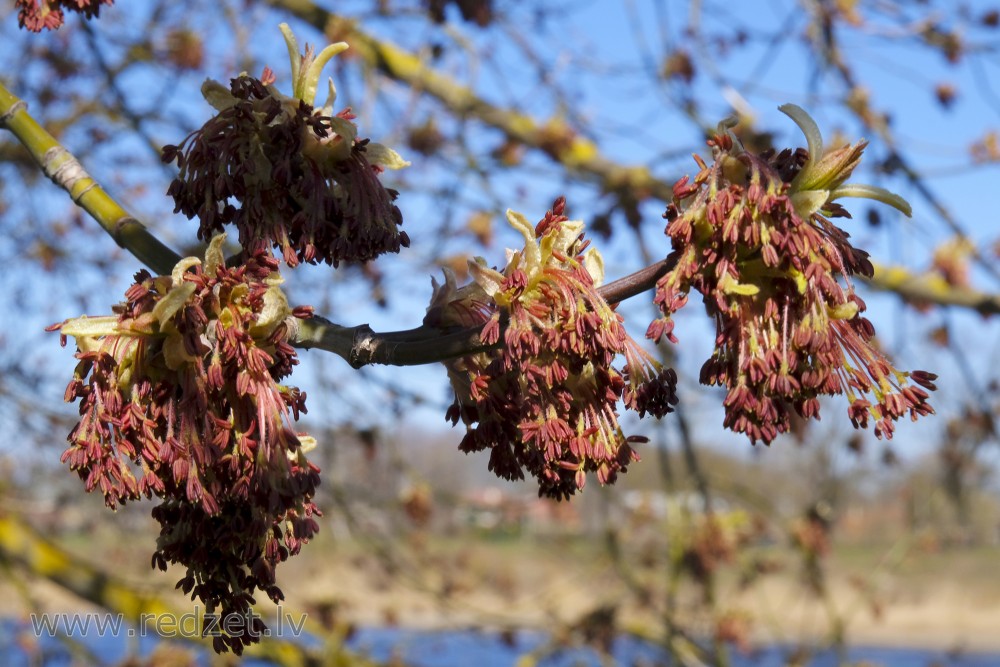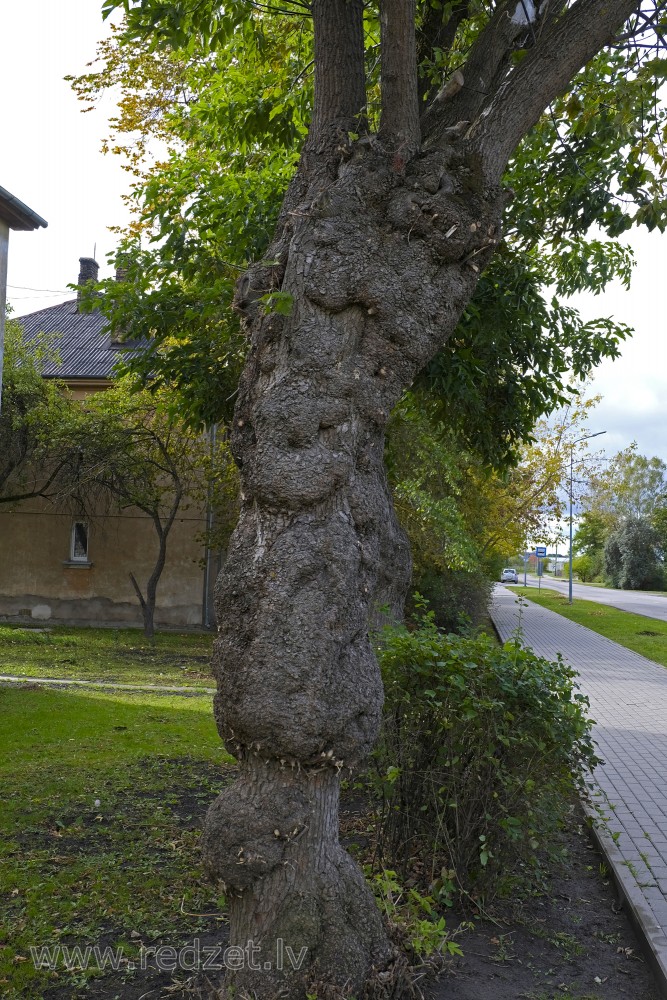Acer negundo (Boxelder maple)
Acer negundo is a species of maple native to North America. Box elder, boxelder maple, ash-leaved maple, and maple ash are among its common names in the United States; in Canada it is commonly known as Manitoba maple[3] and occasionally as elf maple; in the United Kingdom and Ireland it is known as ashleaf maple.
Box elder is a fast-growing, short-lived tree with opposite, compound leaves. It is sometimes considered a weedy or invasive species. It has been introduced to and naturalized on most other continents, including in South America, Australia, New Zealand, South Africa, much of Europe, and parts of Asia.
Description
Acer negundo is a usually fast-growing and fairly short-lived tree that grows up to 10–25 m (35–80 ft) tall, with a trunk diameter of 30–50 cm (12–20 in)}, rarely up to 1 m (3.3 ft)} diameter. It often has several trunks and can form impenetrable thickets.
The shoots are green, often with a whitish to pink or violet waxy coating when young. Branches are smooth, somewhat brittle, and tend to retain a fresh green color rather than forming a bark of dead, protective tissue. The bark on its trunks is pale gray or light brown, deeply cleft into broad ridges, and scaly.
Unlike most other maples (which usually have simple, palmately lobed leaves), Acer negundo has pinnately compound leaves that usually have three to seven leaflets. Simple leaves are also occasionally present; technically, these are single-leaflet compound leaves. Although some other maples (such as Acer griseum, Acer mandshuricum and the closely related A. cissifolium) have trifoliate leaves, only A. negundo regularly displays more than three leaflets.
The leaflets are about 5–10 cm (2–4 in)} long and 3–7 cm (1 1⁄4–2 3⁄4 in)} wide with slightly serrate margins. Leaves have a translucent light green color and turn yellow in the fall.
The flowers are small and appear in early spring on drooping racemes 10–20 cm (4–8 in)} long. The fruits are paired samaras, each seed slender, 1–2 cm (1⁄2–3⁄4 in)} long, with a 2–3 cm (3⁄4–1 1⁄4 in)} incurved wing; they drop in autumn or they may persist through winter. Seeds are usually both prolific and fertile.
Unlike most other maples, A. negundo is fully dioecious and both a male and female tree are needed for either to reproduce.
- Winter buds: Terminal buds acute, an eighth of an inch long. Lateral buds obtuse. The inner scales enlarge when spring growth begins and often become an inch long before they fall.
- Flowers: April, before the leaves, yellow green; staminate flowers in clusters on slender hairy pedicels one and a half to two inches long. Pistillate flowers in narrow drooping racemes.
- Calyx: Yellow green; staminate flowers campanulate, five-lobed, hairy. Pistillate flowers smaller, five-parted; disk rudimentary.
- Corolla: Absent.
- Stamens: Four to six, exserted; filaments slender, hairy; anthers linear, connective pointed.
- Pistil: Ovary hairy, borne on disk, partly enclosed by calyx, two-celled, wing-margined. Styles separate at base into two stigmatic lobes.
- Fruit: Maple keys, full size in early summer. Borne in drooping racemes, pedicels one to two inches long. Key an inch and a half to two inches long, nutlets diverging, wings straight, or incurved. September. Seed half an inch long. Cotyledons, thin, narrow.
https://en.wikipedia.org/wiki/Acer_negundo
Continue reading






